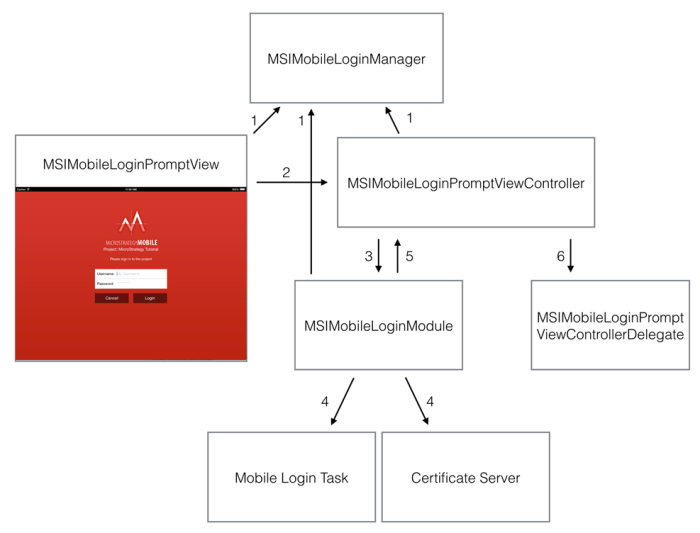Hardcoded creds mobile apps: The phrase alone should send shivers down the spine of any developer. Imagine this: your app, meticulously crafted, suddenly becomes a wide-open door for hackers. Hardcoding API keys, database passwords, or any sensitive information directly into your mobile app’s code is like leaving your front door unlocked with a neon sign screaming, “Rob me!” This article dives deep into the perils of this practice, exploring the security risks, best practices for secure credential management, and the legal ramifications of such negligence.
We’ll dissect real-world examples of devastating breaches caused by hardcoded credentials, examine effective detection and mitigation techniques, and even delve into the dark art of reverse engineering and how attackers exploit this vulnerability. By the end, you’ll not only understand the gravity of the situation but also possess the knowledge to build secure, resilient mobile applications.
Security Risks of Hardcoded Credentials in Mobile Apps
Hardcoding credentials directly into mobile applications is a major security blunder, akin to leaving your house keys under the welcome mat. It exposes your app to a range of vulnerabilities, making it a juicy target for malicious actors. This practice bypasses essential security mechanisms, rendering your app susceptible to various attacks and potentially leading to significant data breaches and financial losses.
Vulnerabilities Introduced by Hardcoded Credentials
Hardcoding credentials directly into the application’s source code creates several significant security vulnerabilities. Reverse engineering the app, a relatively straightforward process, allows attackers to extract these credentials. This exposes sensitive information like API keys, database passwords, and other access tokens, giving attackers unfettered access to your backend systems and user data. Furthermore, malicious code injected into the app can easily access and exploit these hardcoded credentials. The ease of access makes this a highly attractive attack vector for hackers. Even seemingly minor vulnerabilities, like a poorly secured storage location for the application’s data, can become major pathways for attackers to exploit hardcoded credentials.
Impact of Unauthorized Access
The consequences of unauthorized access resulting from exposed hardcoded credentials can be severe. Attackers can gain complete control over your application’s backend systems, leading to data breaches, financial losses, and reputational damage. They might steal user data, including personal information, financial details, and sensitive health records. They could also manipulate application data, disrupt services, or even use your infrastructure for malicious purposes like launching further attacks. The cost of remediation, including legal fees, regulatory fines, and the impact on customer trust, can be substantial.
Real-World Examples of Hardcoded Credential Breaches
Several high-profile security breaches have been directly attributed to hardcoded credentials in mobile apps. While specific details are often kept confidential for security reasons, news reports and security advisories frequently highlight the vulnerability of this practice. Imagine a scenario where a ride-sharing app hardcodes its database credentials. A determined attacker could reverse-engineer the app, extract these credentials, and gain access to sensitive user data like locations, payment information, and ride history. Similarly, a mobile banking app with hardcoded API keys could allow an attacker to make unauthorized transactions or access user accounts. These examples underscore the real-world implications of this critical security flaw.
Hypothetical Mobile App with Hardcoded Credentials and Attack Vectors, Hardcoded creds mobile apps
Let’s consider a hypothetical mobile game, “AdventureQuest,” which uses hardcoded API keys to connect to its backend server for high score submissions and in-app purchases. An attacker could:
1. Reverse engineer the APK (Android Package Kit): They could decompile the app’s code, revealing the hardcoded API keys.
2. Use the API keys: With access to these keys, the attacker could manipulate the game’s backend. They could potentially grant themselves unlimited in-game currency, modify high scores, or even gain access to user accounts.
3. Create a malicious version: The attacker could create a modified version of the app, replacing the legitimate API keys with their own. Users downloading this malicious version would unknowingly provide the attacker with access to their game data and potentially their payment information.
Severity of Vulnerabilities Based on Credential Type
| Credential Type | Severity | Potential Impact | Mitigation |
|---|---|---|---|
| API Keys | High | Unauthorized access to backend services, data manipulation | Use environment variables, secure key management services |
| Database Passwords | Critical | Complete compromise of database, data theft, service disruption | Secure database access, encryption, robust authentication |
| User Credentials (Hardcoded) | Critical | Account takeover, data theft, identity theft | Never hardcode, use secure authentication mechanisms |
| Internal Certificates | High | Man-in-the-middle attacks, data interception | Secure key storage, certificate pinning |
Best Practices for Secure Credential Management in Mobile Apps
Protecting user credentials is paramount in mobile app development. A breach can lead to devastating consequences, including identity theft, financial loss, and reputational damage. Therefore, implementing robust security measures is not just a best practice—it’s a necessity. This section Artikels crucial strategies for securely handling sensitive user information within your mobile applications.
Secure Keystores and Secure Storage Mechanisms
Securely storing credentials requires leveraging the built-in security features provided by the operating system. Android’s Keystore System and iOS’s Keychain provide hardware-backed security, protecting keys and sensitive data from unauthorized access, even if the device is compromised. These keystores offer significantly stronger protection than simply encrypting data and storing it in the app’s file system. Using these secure enclaves prevents attackers from extracting credentials, even with root or jailbreak access. The benefit is clear: a significantly reduced attack surface and increased user trust.
Credential Management Approaches: A Comparison
Several approaches exist for managing credentials, each with its own strengths and weaknesses. One common method involves storing credentials directly in the secure keystore, encrypted with a strong key. This offers good security but requires careful key management. Another approach uses a password manager integration, leveraging the security of established password management solutions. This offloads the burden of secure credential storage to a specialized service, but introduces reliance on a third-party provider. Finally, some apps employ federated authentication, directing users to existing accounts on platforms like Google or Facebook. This simplifies user experience but relies on the security of the federated provider. The choice depends on the app’s specific security needs and user experience priorities.
Encryption Methods and Their Security Implications
The choice of encryption algorithm directly impacts the security of stored credentials. AES (Advanced Encryption Standard) with a sufficiently long key length (e.g., 256-bit) is widely considered a strong and secure option. However, even the strongest encryption is useless if the key management is weak. Symmetric encryption, like AES, uses the same key for encryption and decryption, while asymmetric encryption, like RSA, uses separate public and private keys. Symmetric encryption is generally faster but requires secure key exchange. Asymmetric encryption is slower but offers better key management capabilities. The selection should balance security needs with performance considerations. For instance, using AES for encrypting data within the keystore and RSA for key management would be a robust strategy.
Implementing a Secure Credential Management System
Implementing a secure credential management system involves several steps:
- Choose a Secure Storage Mechanism: Select either Android’s Keystore or iOS’s Keychain based on the target platform.
- Select an Encryption Algorithm: Implement AES-256 for data encryption and consider RSA for key management.
- Generate and Protect Keys: Use the platform’s key generation APIs to create strong, unique keys. Never hardcode keys.
- Encrypt Credentials Before Storage: Encrypt the user’s credentials using the chosen algorithm and store the encrypted data in the selected secure storage.
- Securely Decrypt Credentials: Decrypt credentials only when necessary, and immediately erase them from memory after use.
- Implement Secure Key Management: Use secure methods to protect and manage the encryption keys, avoiding situations where they could be compromised.
- Regular Security Audits: Conduct regular security audits and penetration testing to identify and address potential vulnerabilities.
Following these steps will significantly enhance the security of your mobile application and protect user credentials from unauthorized access. Remember that security is an ongoing process, and continuous improvement is crucial.
Detection and Mitigation of Hardcoded Credentials

Source: alamy.com
So, you’ve built a killer mobile app, but accidentally baked your API keys right into the code? Uh oh. Finding and fixing hardcoded credentials is crucial for app security. This isn’t just about avoiding a potential data breach; it’s about maintaining user trust and avoiding hefty fines. Let’s dive into how to detect and neutralize these ticking time bombs.
Identifying and removing hardcoded credentials requires a multi-pronged approach. We’ll cover both static and dynamic analysis techniques, along with practical steps to remediate vulnerable code. Think of it as a security checkup for your app, ensuring it’s ready for prime time (and not vulnerable to hackers).
Static Analysis Techniques
Static analysis examines your app’s code without actually running it. Think of it as a thorough code review, but on steroids. Tools like MobSF (Mobile Security Framework) and QARK (Quick Android Review Kit) can scan your app’s source code and compiled binaries for suspicious patterns, including hardcoded credentials. These tools are particularly adept at finding strings that look like API keys, database passwords, or other sensitive information buried within the code. They essentially act as sophisticated find-and-replace tools, but instead of looking for misspelled words, they’re hunting for security vulnerabilities. The output from these tools will highlight potential areas of concern that require further investigation.
Dynamic Analysis Techniques
Dynamic analysis involves running your app and observing its behavior. Tools like Frida and Drozer allow you to hook into the app’s runtime environment and monitor its interactions. This allows you to see exactly what data the app is sending and receiving, which can reveal hardcoded credentials that might not be easily spotted during static analysis. For instance, if your app is constantly sending the same API key with every request, regardless of user input, dynamic analysis will immediately expose this vulnerability. This real-time monitoring provides a more comprehensive understanding of how the app behaves and exposes vulnerabilities that might only appear during execution.
Secure Removal and Replacement of Hardcoded Credentials
Once you’ve identified hardcoded credentials, the next step is to remove them. Simply deleting the credentials isn’t enough; you need to implement a secure mechanism for managing them. The most common approach is to use environment variables or a secure configuration service. This involves storing the credentials separately from the app’s code, often on a secure server, and retrieving them at runtime. This decoupling ensures that even if the app is compromised, the credentials remain protected. Think of it like keeping your house keys in a safe instead of leaving them under the welcome mat. A well-structured configuration management system allows you to update credentials without recompiling or redistributing the app.
Remediation of a Mobile App with Hardcoded Credentials
Let’s imagine a scenario where a mobile banking app has its database password hardcoded directly into its network communication module. During static analysis, a tool like MobSF flags the suspicious string “password123”. Dynamic analysis confirms the app consistently sends this password with every request. The remediation process would involve removing “password123” from the code and implementing a secure configuration system. This system could involve fetching the database password from a secure server using HTTPS and storing it securely in memory, ideally using encryption techniques to protect it even if the app’s memory is compromised.
Code Patterns Indicating Hardcoded Credentials
Identifying hardcoded credentials often involves recognizing specific code patterns. Here are some red flags to watch out for:
Knowing these patterns can significantly improve the efficiency of your code review and security analysis. It’s like having a cheat sheet for spotting potential vulnerabilities before they cause problems.
- Literal strings resembling API keys, database passwords, or other sensitive information directly embedded in the code.
- Hardcoded URLs containing sensitive information such as authentication tokens.
- Direct use of cryptographic keys or certificates within the application code.
- The presence of base64-encoded strings that, when decoded, reveal sensitive information.
- Configuration files stored within the app bundle that contain sensitive credentials.
Legal and Compliance Implications

Source: hongkiat.com
Hardcoding credentials into mobile apps isn’t just a security blunder; it’s a legal and compliance nightmare waiting to happen. Ignoring the potential legal ramifications of insecure data handling can lead to hefty fines, damaged reputation, and even legal action. This section explores the legal landscape surrounding insecure data storage in mobile apps and Artikels steps to ensure compliance.
Data breaches stemming from hardcoded credentials can trigger significant legal and financial repercussions. The severity of these consequences depends on factors like the type of data compromised, the number of affected users, and the applicable regulations in the relevant jurisdictions. Companies face not only financial penalties but also reputational damage, loss of customer trust, and potential legal battles.
Data Privacy Regulations and Standards
Several international and regional regulations govern the handling of personal data, making secure data management paramount. Non-compliance can lead to substantial penalties. For example, the General Data Protection Regulation (GDPR) in Europe mandates stringent data protection measures, including the principle of data minimization and the requirement for appropriate security measures to protect personal data. In the United States, various state laws, such as the California Consumer Privacy Act (CCPA) and the California Privacy Rights Act (CPRA), impose similar obligations on businesses handling personal data. The Payment Card Industry Data Security Standard (PCI DSS) applies specifically to organizations that process payment card data, demanding robust security measures to protect sensitive payment information. These regulations emphasize the need for robust security measures, including secure credential management, to prevent data breaches and maintain compliance.
Penalties and Liabilities for Data Breaches
The penalties for data breaches resulting from insecure credential management can be severe. Under GDPR, organizations can face fines up to €20 million or 4% of their annual global turnover, whichever is higher. Similar hefty fines can be imposed under other regulations like the CCPA and CPRA. Beyond fines, organizations may face class-action lawsuits from affected individuals, leading to substantial legal costs and reputational damage. Furthermore, the cost of remediation, including notification, credit monitoring services for affected users, and internal investigations, can also be substantial. The reputational damage alone can lead to significant financial losses, affecting customer loyalty and business opportunities.
Industry Best Practices for Compliance
Adhering to industry best practices is crucial for compliance. This involves implementing robust security measures throughout the software development lifecycle (SDLC), from design and development to testing and deployment. Employing secure coding practices, conducting regular security audits, and implementing multi-factor authentication (MFA) are essential. Regular security training for developers and staff is also vital. Companies should also establish a comprehensive incident response plan to handle data breaches effectively and minimize the impact. Proactive measures, such as penetration testing and vulnerability assessments, help identify and address security weaknesses before they can be exploited. Finally, maintaining detailed records of security measures and incident responses demonstrates a commitment to compliance and can help mitigate legal liabilities.
Compliance Checklist for Mobile App Development
Before launching a mobile application, a thorough checklist ensures compliance.
- Conduct a thorough privacy impact assessment to identify and mitigate potential risks.
- Implement robust security measures, including secure credential management, encryption, and access controls.
- Comply with all relevant data privacy regulations, including GDPR, CCPA, and PCI DSS, as applicable.
- Develop and implement a comprehensive data breach response plan.
- Conduct regular security testing and audits to identify and address vulnerabilities.
- Provide transparent privacy policies and obtain necessary user consents.
- Maintain detailed records of security measures and incident responses.
- Train developers and staff on secure coding practices and data protection regulations.
- Implement multi-factor authentication (MFA) for user accounts.
- Regularly update and patch the application to address known vulnerabilities.
Reverse Engineering and Hardcoded Credentials

Source: microstrategy.com
Reverse engineering mobile apps to extract sensitive information, like hardcoded credentials, is a sadly common attack vector. Attackers employ various techniques to achieve this, often exploiting vulnerabilities in the app’s design and implementation. Understanding these techniques is crucial for developers to build more secure applications.
The process of reverse engineering involves disassembling the app’s compiled code to understand its functionality and extract hidden data. This can be achieved through a variety of methods, each with its own level of complexity and effectiveness.
Techniques for Reverse Engineering Mobile Applications
Attackers use a range of tools and techniques to reverse engineer mobile applications and extract hardcoded credentials. These range from relatively simple static analysis to more sophisticated dynamic analysis methods. Static analysis involves examining the app’s code without actually running it, while dynamic analysis involves monitoring the app’s behavior while it’s running.
Obfuscation and Code Protection Techniques
Obfuscation techniques aim to make the app’s code more difficult to understand by transforming it into a less readable form. This can involve renaming variables and functions, inserting dummy code, and using control flow obfuscation. Code protection techniques go further, adding layers of security to prevent unauthorized access and modification. These techniques can significantly increase the difficulty of reverse engineering, but they are not foolproof. Sophisticated attackers may still be able to overcome these protections, especially with the right tools and persistence.
Challenges in Protecting Against Sophisticated Reverse Engineering
Completely preventing determined attackers from reverse engineering an app is nearly impossible. Highly skilled attackers can employ advanced techniques such as dynamic analysis, memory debugging, and even hardware-based attacks to circumvent even the most robust obfuscation and code protection measures. The ongoing arms race between security professionals and attackers necessitates a multi-layered approach to security.
Tools and Techniques Used for Reverse Engineering Mobile Apps
Several tools are commonly used for reverse engineering mobile apps. For Android apps, tools like APKTool, jadx, and Frida are frequently employed to disassemble the APK file and analyze the code. For iOS apps, tools like Hopper and IDA Pro are often used. These tools allow attackers to examine the app’s code, identify sensitive information like hardcoded credentials, and potentially modify its behavior.
Scenario: Successful Extraction of Hardcoded Credentials
An attacker obtained a copy of a popular mobile banking app. Using APKTool, they disassembled the APK file, revealing the app’s underlying Java code. Through careful analysis with jadx, they identified a section of code containing hardcoded API keys and database connection strings, which were embedded directly in the app’s code. These credentials allowed them to gain unauthorized access to the banking app’s backend systems. Further analysis using Frida allowed them to monitor the app’s network traffic in real-time, confirming their access and observing sensitive data transmission. The attacker then leveraged this access to siphon funds from user accounts.
Final Review: Hardcoded Creds Mobile Apps
In the cutthroat world of mobile app development, security shouldn’t be an afterthought; it’s the foundation upon which your app’s success—and your reputation—rests. Hardcoded credentials are a ticking time bomb, waiting to explode into a catastrophic data breach. By understanding the risks, implementing robust security measures, and staying ahead of the curve in terms of evolving attack vectors, you can safeguard your app, your users, and your business. Ignoring this isn’t an option; it’s a recipe for disaster. So, ditch the hardcoded creds and embrace secure credential management practices. Your future self (and your users) will thank you.
